Do you have a question about the Hitachi C12FCH and is the answer not in the manual?
Explains the meaning of WARNING, CAUTION, and NOTE signal words.
Provides essential safety rules for operating power tools.
Lists specific operating instructions to ensure safe use of the power tool.
Identifies and illustrates the various parts of the power tool.
Lists and describes the accessories that come standard with the tool.
Details the process of installing the power tool on a workbench.
Ensures the correct power source is connected to the tool.
Confirms the trigger switch is in the OFF position before connecting power.
Inspects the saw blade for cracks or damage before use.
Verifies the saw blade is mounted securely to the spindle.
Ensures the lower guard functions correctly to protect the operator.
Verifies the spindle lock is in the correct position before operation.
Explains how to turn the tool on and off using the trigger switch.
Describes how to mount and use the vise assembly for securing workpieces.
Details how to install holders for supporting long workpieces.
Explains the use of a stopper for consistent cutting lengths.
Describes checking and positioning the sub fence for stable cutting.
Guides on adjusting the laser line for precise cutting alignment.
Explains the function and operation of the digital display panel.
Details the process of performing cutting operations with the tool.
Outlines the steps for setting up and performing miter cuts.
Explains how to set up and perform bevel cuts on the workpiece.
Describes how to make fine adjustments to the bevel angle.
Provides instructions for performing compound cuts.
Details the specific procedures for cutting crown molding.
Offers advice for cutting easily deformed materials like aluminum sash.
Explains how to attach and use the dust bag accessory.
Advises on replacing saw blades when they show signs of wear or damage.
Details how to inspect and adjust the lever for fence alignment.
Explains how to inspect and replace worn carbon brushes in the motor.
Provides precautions for handling the tool's motor to prevent damage.
Recommends regular checks for loose screws and components.
Advises testing the lower guard's function before each use.
Provides instructions for proper storage of the tool when not in use.
Describes the lubrication points and frequency for maintaining the tool.
Outlines the procedures for cleaning the tool's exterior and components.
Lists service parts with item numbers, codes, and quantities.
Explains the meaning of WARNING, CAUTION, and NOTE signal words.
Provides essential safety rules for operating power tools.
Lists specific operating instructions to ensure safe use of the power tool.
Identifies and illustrates the various parts of the power tool.
Lists and describes the accessories that come standard with the tool.
Details the process of installing the power tool on a workbench.
Ensures the correct power source is connected to the tool.
Confirms the trigger switch is in the OFF position before connecting power.
Inspects the saw blade for cracks or damage before use.
Verifies the saw blade is mounted securely to the spindle.
Ensures the lower guard functions correctly to protect the operator.
Verifies the spindle lock is in the correct position before operation.
Explains how to turn the tool on and off using the trigger switch.
Describes how to mount and use the vise assembly for securing workpieces.
Details how to install holders for supporting long workpieces.
Explains the use of a stopper for consistent cutting lengths.
Describes checking and positioning the sub fence for stable cutting.
Guides on adjusting the laser line for precise cutting alignment.
Explains the function and operation of the digital display panel.
Details the process of performing cutting operations with the tool.
Outlines the steps for setting up and performing miter cuts.
Explains how to set up and perform bevel cuts on the workpiece.
Describes how to make fine adjustments to the bevel angle.
Provides instructions for performing compound cuts.
Details the specific procedures for cutting crown molding.
Offers advice for cutting easily deformed materials like aluminum sash.
Explains how to attach and use the dust bag accessory.
Advises on replacing saw blades when they show signs of wear or damage.
Details how to inspect and adjust the lever for fence alignment.
Explains how to inspect and replace worn carbon brushes in the motor.
Provides precautions for handling the tool's motor to prevent damage.
Recommends regular checks for loose screws and components.
Advises testing the lower guard's function before each use.
Provides instructions for proper storage of the tool when not in use.
Describes the lubrication points and frequency for maintaining the tool.
Outlines the procedures for cleaning the tool's exterior and components.
Lists service parts with item numbers, codes, and quantities.
| Type | Miter Saw |
|---|---|
| Blade Diameter | 12 inches |
| Motor Power | 15 Amps |
| Arbor Size | 1 inch |
| Bevel Angle Range | 0° to 45° |
| No-Load Speed | 4000 RPM |
| Max Cutting Depth at 90° | 4-3/4 inches |

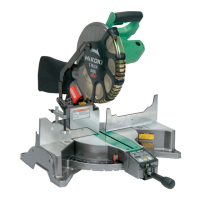
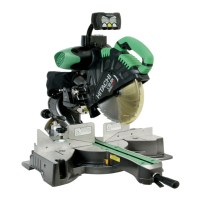
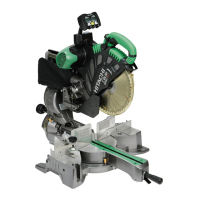
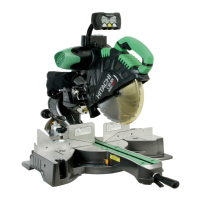
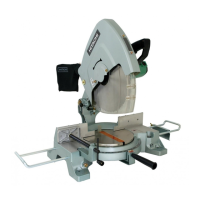


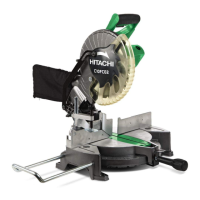

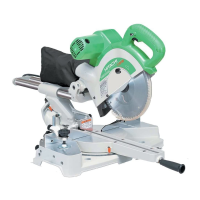
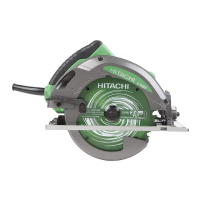
